This manual covers the full range of communicable diseases in the African region: skin infections, malaria and other vector-borne diseases, infections transmitted via contaminated food and water, tuberculosis and leprosy, diseases transmitted through animals, haemorrhagic fevers and severe acute respiratory illnesses. In this new edition HIV/AIDS has been covered as a chapter on its own. The authors have also included a new chapter titled Emerging and Re-emerging infections in which diseases such as Rift valley fever, Avian flu and Ebola have been discussed. The target for this book include students in medical training colleges, community health workers, nurses, clinical officers, public health officers, teachers of health workers and indeed all who are interested in and who want to learn about communicable diseases in Africa.
COMMUNICABLE DISEASES 4th edition
KSh 3,000.00
This manual covers the full range of communicable diseases in the African region: skin infections, malaria and other vector-borne diseases, infections transmitted via contaminated food and water, tuberculosis and leprosy, diseases transmitted through animals, haemorrhagic fevers and severe acute respiratory illnesses. In this new edition HIV/AIDS has been covered as a chapter on its own. The authors have also included a new chapter titled Emerging and Re-emerging infections in which diseases such as Rift valley fever, Avian flu and Ebola have been discussed. The target for this book include students in medical training colleges, community health workers, nurses, clinical officers, public health officers, teachers of health workers and indeed all who are interested in and who want to learn about communicable diseases in Africa.
Related products
-
Nursing Care of Children, 4th Edition
KSh 18,016.00Master the art of caring for children with most effective, efficient, and affordable title on pediatric nursing care. Taking on a family focus, this student-friendly text teaches growth, development, and information on the major body system alterations. Plus, dramatically streamlined content and new learning tools make this new edition even more tailored to your learning needs.
-
Hutchison’s Clinical Methods International Edition, 25th Edition
KSh 6,370.00Hutchison’s Clinical Methods, 25th International Edition, offers comprehensive guidance on patient assessment, clinical examination, and diagnostic skills, essential for medical students and practitioners worldwide.
Sir Robert Hutchison first published his textbook on Clinical Methods in 1897 and this latest edition maintains its reputation as the go-to guide to learn the core skills every clinician needs in their everyday practice.
Medical students and doctors in training will find essential guidance to taking a full history, examining a patient and interpreting the findings. They will learn the art of understanding, contextualising, communicating and explaining, with the doctor-patient relationship firmly at the centre of their practice. These skills remain essential for every doctor, in addition to modern investigative methods.
The book covers basic principles, different patient groups and all the main body systems. Each chapter includes relevant clinical methods and offers guidance for appropriate investigations. New methods and investigations are incorporated into established patterns of clinical practice to offer a fully integrated approach.
This award-winning textbook remains as relevant today as ever and will be treasured by doctors at all levels of training and practice as an outstanding source of learning and reference.
Key Features-
- All chapters carefully reviewed and updated to reflect modern practice
-
- Written by experts in their field and reviewed by an International Advisory Board – content is relevant to a wide international readership including in the Indian sub-continent, the Middle East and Africa
-
- Covers all the main body systems, including the core areas of respiratory, cardiological, gastrointestinal, neurological and locomotor systems
-
- Text organised by system and problem to aid navigation
-
- Chapters can be read individually, to avoid duplication and need for cross-referencing
-
- Tabulated information and diagrams for clarity and conciseness
-
- Tailored to student needs but suitable for doctors at all levels of training and practice
-
- Winner of multiple awards, including the BMA book awards
-
- New appendix describing the clinical features of COVID-19
Author InformationEdited by Michael Glynn, MA, MD, FRCP, FHEA, Consultant Physician, Gastroenterologist and Hepatologist, Barts Health NHS Trust; Honorary Senior Lecturer, Barts and the London School of Medicine and Dentistry; Former National Clinical Director for GI and Liver Diseases, NHS England and William M Drake, DM FRCP, Consultant Physician/Reader in Medicine, Department of Endocrinology, St Bartholomew’s Hospital, London, UK -
-
Applied Theories in Occupational Therapy 2nd Edition by Roseanna Tufano (Author), Marilyn B. Cole (Author)
KSh 11,000.00Applied Theories in Occupational Therapy: A Practical Approach, Second Edition provides a system-based, comprehensive overview of the theories, models, and frames of reference that influence occupational therapy around the world. Esteemed authors Marilyn B. Cole and Roseanna Tufano have updated their foundational text with an evidence-based focus derived from their experiences of more than 30 years teaching theoretical content to students.
Applied Theories in Occupational Therapy: A Practical Approach, Second Edition offers practical templates to help readers learn the key constructs of each theory and assimilate knowledge based on Mosey’s organizational structure. Each theory-based chapter is designed for ease in gathering content knowledge and comparing theories in a distinctive manner. The book includes:
- Summaries of the current trends found in practice, along with external influential models of health and wellness impacting populations of concern
- Exploration of some of the most common occupation-based models around the world. Each model’s holistic conceptual nature is described, including theoretical assumptions and practice guidelines for evaluation and intervention
- Reviews of common frames of reference found in evidence-based practice, which address the secondary and tertiary needs of common populations
In this Edition, learning activities and case-based analyses strengthen the application of theory into current practice contexts. Practical guidelines assist the reader in formulating an evaluation process and determining the relevant intervention strategies that promote occupational participation, engagement, and functioning across the lifespan and the continuum of health.
-
McRae’s Elective Orthopaedics, 7th Edition
KSh 11,000.00This new must-have text is a companion to McRae’s Orthopaedic Trauma and Emergency Fracture Management, extending this much-loved family of reference guides to cover the entire range of modern orthopaedic trauma and elective practice.
McRae’s Elective Orthopaedics is both an examination manual and a text on orthopaedic pathology. It offers a unique combination of subject matter and instructive illustrations in the tradition original author, Ronald McRae, to convey economically and effectively essential information for examination and management of the orthopaedic patient.
This book is organised into two parts. The first covers the relevant applied clinical sciences, and the second adopts a regional approach to the description of individual diseases and their non-operative or operative management. It is suitable for junior orthopaedic surgical trainees as well as other health professionals who encounter patients with musculoskeletal illnesses.
Key Features-
- Internationally respected textbook that provides in-depth knowledge across a breadth of conditions
-
- More than 140 new illustrations present essential information in a unique ‘picture book’ style
-
- Concise and accessible – perfect for orthopaedic surgical trainees
-
- Practical tips, clinical examination pearls and surgical techniques – ideal for use on the wards
-
- Learning enhanced with anatomical illustrations, diagrams, radiographic imaging and clinical photos, accompanied by descriptions of the background to each condition
-
- Updated to include modern investigation and management
-
-
Myles Textbook for Midwives African Edition, 3rd Edition
KSh 4,914.00The edition of this seminal textbook, Myles Textbook for Midwives, has been extensively revised and restructured to ensure that it reflects current midwifery practice, with an increased focus on topics that are fundamental to midwifery practice today. The book comes with Elsevier EVOLVE ancillaries – an online learning package which consists of 500 self-assessment questions and answers and a fully downloadable image bank.
- Designed to enable midwifery practitioners to provide safe and competent care, which is tailored to the patient’s individual needs
- Extensively illustrated to assist visual learning with additional ‘pull out’ textboxes to highlight key information
- Streamlined chapters with similar themes and approach help consolidate learning
- Reflects all modern midwifery curricula by presenting a strong emphasis on evidenced-based practice and the use of technology
- Over 500 on-line multiple-choice questions to enable readers to test their knowledge
- Offers a full image bank of downloadable illustrations to assist with personal projects and/or further learning
- References, Further Reading and Useful Websites promote further learning
- Glossary of Terms and Acronyms provide simple definitions of more complex terminologies
- Full colour illustrations now used throughout the book, in response to student feedback
- Contains many new chapters, some of which are authored by members of the multi-professional team
- Up-to-date guidance on professional regulation, midwifery supervision, legal and ethical issues, risk management and clinical governance
- Recognition that midwives increasingly care for women with complex health needs, in a multicultural society
- Examination of the dilemmas involved in caring for women with a raised body mass index
- Chapter on optimising care of the perineum for women with perineal trauma, including those who have experienced female genital mutilation
- Guidance to support the trend for midwives to undertake the neonatal physical examination of the healthy term infant
- Additional coverage of basic neonatal resuscitation
-
Handbook of Health Research Methods: Investigation, Measurement and Analysis 1st Edition
KSh 7,278.00This handbook helps researchers to plan, carry out, and analyse health research, and evaluate the quality of research studies. The book takes a multidisciplinary approach to enable researchers from different disciplines to work side-by-side in the investigation of population health, the evaluation of health care, and in health care delivery.
Handbook of Health Research Methods is an essential tool for researchers and postgraduate students taking masters courses, or undertaking doctoral programmes, in health services evaluation, health sciences, health management, public health, nursing, sociology, socio-biology, medicine and epidemiology. However, the book also appeals to health professionals who wish to broaden their knowledge of research methods in order to make effective policy and practice decisions.
Contributors: Joy Adamson, Geraldine Barrett, Jane P. Biddulph, Ann Bowling, Sara Brookes, Jackie Brown, Simon Carter, Michel P. Coleman, Paul Cullinan, George Davey Smith, Paul Dieppe, Jenny Donovan, Craig Duncan, Shah Ebrahim, Vikki Entwistle, Clare Harries, Lesley Henderson, Kelvyn Jones, Olga Kostopoulou, Sarah J. Lewis, Richard Martin, Martin McKee, Graham Moon, Ellen Nolte, Alan O’Rourke, Ann Oakley, Tim Peters, Tina Ramkalawan, Caroline Sanders, Mary Shaw, Andrew Steptoe, Jonathan Sterne, Anne Stiggelbout, S.V. Subramanian, Kate Tilling, Liz Twigg, Suzanne Wait.
-
Nelson Textbook of Pediatrics_vol 1
KSh 12,000.00The worlds most trusted pediatrics resource continues to provide the most authoritative coverage of the best approaches to care in this streamlined new edition. With two new editors, extensive updates, and expanded online features, youll have the well-rounded, up-to-date guidance you need to offer your patients the very best. ? Stay current on recent developments and hot topics such as melamine poisoning, long-term mechanical ventilation in the acutely ill child, sexual identity and adolescent homosexuality, age-specific behavior disturbances, and psychosis associated with epilepsy. ? Tap into substantially enhanced content with world-leading clinical and research expertise from two new editors Joseph W. St. Geme III, MD, and Nina F. Schor, MD, PhD who contribute on key subspecialties, including pediatric infectious disease and pediatric neurology. ? Manage the transition to adult healthcare for children with chronic diseases through discussions of the overall health needs of patients with congenital heart defects, diabetes, and cystic fibrosis. ? Recognize, diagnose, and manage genetic conditions more effectively using an expanded section that covers these diseases, disorders, and syndromes extensively.
-
Contact Lens Practice 3rd Edition
KSh 29,400.00In this thoroughly revised and updated third edition of Contact Lens Practice, award-winning author, researcher and lecturer, Professor Nathan Efron, provides a comprehensive, evidence-based overview of the scientific foundation and clinical applications of contact lens fitting. The text has been refreshed by the inclusion of ten new authors – a mixture of scientists and clinicians, all of whom are at the cutting edge of their specialty. The chapters are highly illustrated in full colour and subject matter is presented in a clear and logical format to allow the reader to quickly hone in the desired information.

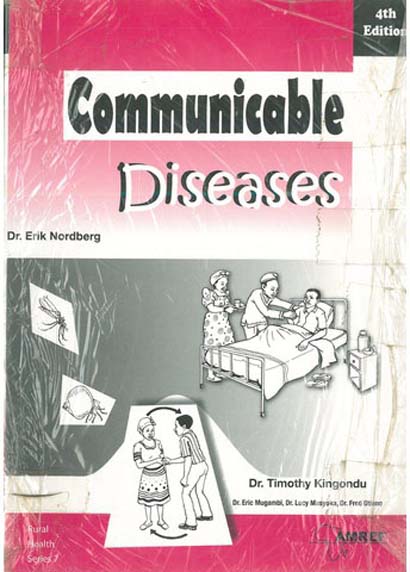
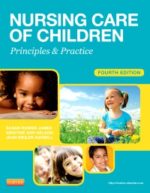
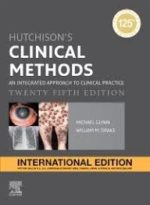
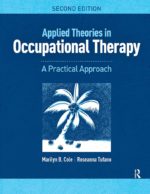
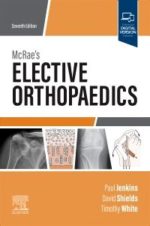




Be the first to review “COMMUNICABLE DISEASES 4th edition”